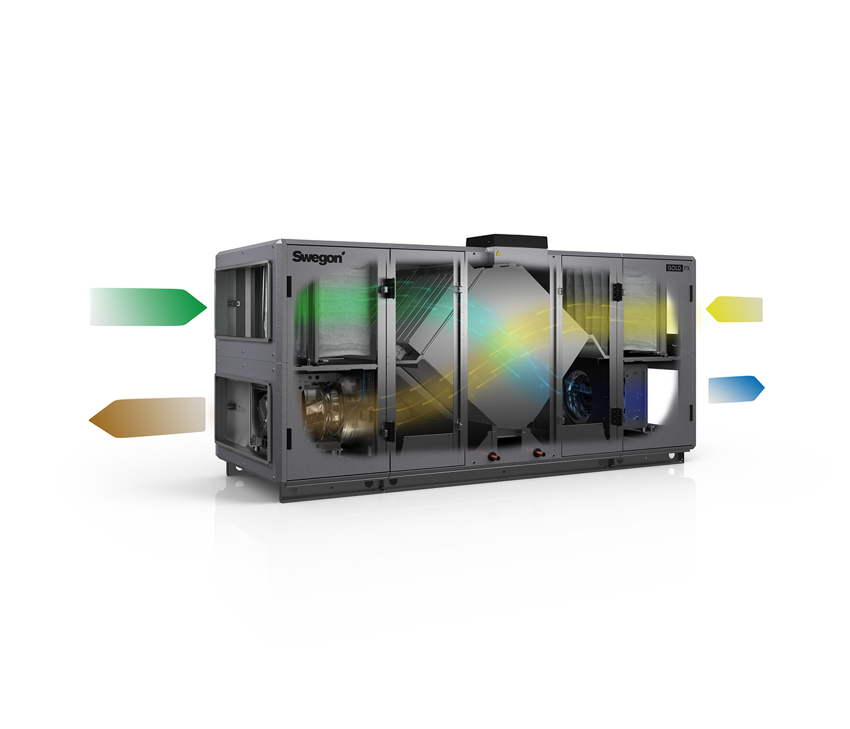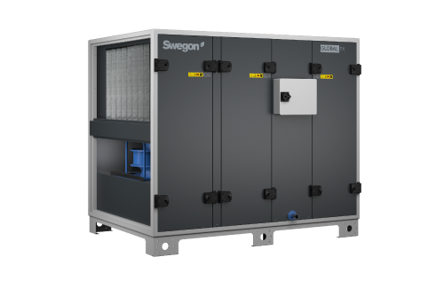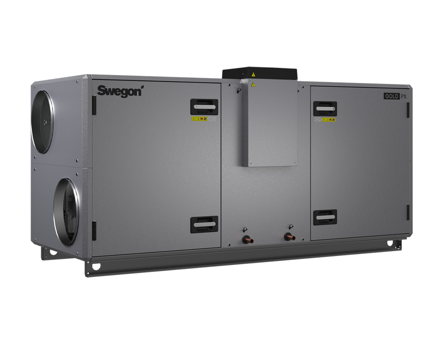Plate heat exchangers
How does a plate heat exchanger work? Thin aluminium fins - plates - that form air ducts where the extract air counterflows the supply air is the principle of a counterflow heat exchanger. The warmer extract air heats the plates and transfer the heat to the supply air that has a lower temperature. The air flows of supply air and extract air are completely separate, meaning that transfer of odours or particles from the extract air to the supply air is nearly eliminated. For that reason, plate heat exchangers are usually used in homes or facilities where there is a risk of odour transfer.
The temperature efficiency of balanced supply and extract air can be as high as the rotary heat exchanger, but defrosting is a disadvantage that has to be dealt with.

How does it work?
The counterflow heat exchanger is as standard equipped with bypass dampers and two heat exchanger dampers for variable and automatic regulation of the heat exchanger’s efficiency on heat recovery.
The counterflow heat exchanger is available in two versions:
- Maximum Pressure Efficiency (MPE) with focus on low pressure drop
- Maximum Temperature Efficiency (MTE) where high temperature efficiency is a priority
Even with high temperature efficiency, the annual energy efficiency will be slightly lower than with a rotary heat exchanger as the counterflow heat exchanger requires defrosting.
Consideration is given to the pressure drop across the heat exchanger, the extract air temperature, the moisture content in the extract air and the outdoor air temperature. The control system individually regulates dampers for bypass and the heat exchanger for section-by-section defrosting without the formation of frost. This enables high annual efficiency, smaller air heaters and pressure-drop-optimised operations during the spring and autumn.
Plate heat exchangers are suitable for applications with risk of odour tranfer, such as restaurants and residential buildings.Nicklas Svensson, Product Manager, Swegon
Anti-frost protection
Cold weather and humid extract air pose a risk of frost formation in the heat exchanger. To prevent this, Swegon’s GOLD PX includes our patented defrosting control RECOfrost. RECOfrost adjusts the pressure drop across the heat exchanger in periods when full recovery is not needed, e.g. in spring and autumn. The result is excellent temperature efficiency and energy balance, in any climate.
Broad product range
Plate heat exchangers are suitable for applications where there are strict requirements around odour tranfer and hygene, such as residential properties, restaurants or kitchens. Swegon offers a range of air handling units with counterflow heat exchangers to fit different requirements and types of application.

GLOBAL PX
The GLOBAL range is suitable for light commercial applications and small to medium size projects.
